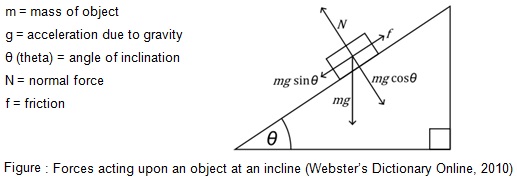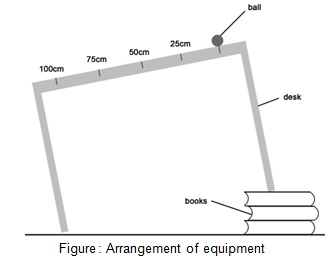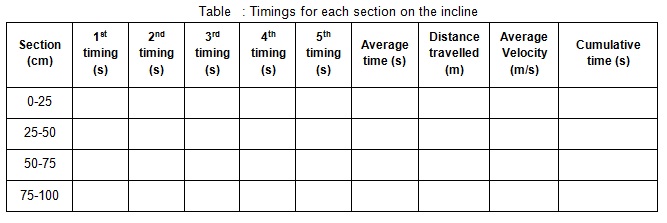The assignment belongs to the laboratory task on the Topic: The acceleration of a body on an incline. You must have to complete in 6 Pages word document.
Objectives
Part 1: To measure the acceleration of an object on an incline.
Part 2: To determine whether the angle of inclination effects the acceleration of an object.
Part 1:
When objects are in motion, their average velocity can be calculated as follows:
Average velocity = Displacement/Elapsed time
Displacement is how far the object has travelled from its starting point. The elapsed time is how long the object took to move this distance. The standard units for displacement are metres (m), and the standard unit for elapsed time is seconds (s). The standard unit for velocity is metres per second (m/s)
The average acceleration of an object can be calculated as follows:
Average acceleration = Change in velocity/Elapsed time
The standard unit of acceleration is metres per second squared (m/s2).
Part 2:
When an object is on an incline, there are various forces acting upon it. Figure shows these forces.

The force pushing the object down the incline is mg sin θ. By Newton’s laws of motion, F= ma, where a is the acceleration of the object.
Therefore:
ma = mg sinθ
Cancelling the mass::
a = g sinθ
It would be expected that as the angle of inclination increases, the acceleration of the object will also increase.
Equipment:
• Desk
• Books
• Tape measure/ruler
• Masking tape
• Stopwatch
• Ball
Procedure:
Part 1: Measuring the acceleration
1. Set up the equipment as shown in figure. Ensure that the incline is just small enough that the ball can roll down. Too steep an incline will make it difficult to time the motion. Measure the angle of the incline.

2. To mark the distances, first place a piece of masking tape at the starting position of the ball, high up the table. Using the measuring tape or ruler, measure 25cm from this point, and mark with another piece of masking tape. Repeat for distance 50cm, 75cm, and 100cm.
3. Place the ball at the starting position, and release at the same time as starting the stopwatch. Time how long it takes for the ball to reach the 25cm mark, and stop the stopwatch. Record this time.
4. Repeat step 3, but start the stopwatch when the ball reaches 25cm, and stop when it reaches 50cm.
5. Repeat step 4 for 50cm-75cm, and 75cm-100cm.
6. Repeats steps 3-5 so that there are 5 timings for each.
Part 2: Changing the incline
1. Using more books, increase the incline of the desk by a few degrees. Avoid having the incline too steep.
2. Repeat steps 3-6 for the new incline.
Results:
You will need to write your results in a table. Table shows a possible arrangement of the results.

Analysis
1. Calculate the average velocity for each section.
2. The cumulative time for 0-25 will be its average time. The cumulative time for 25-50 will be the average time for 0-25 plus the time for 25-50. Follow this pattern for the other two sections.
3. Draw a graph with velocity on the y axis and cumulative time on the x axis.
4. Draw a trend line through the points on the graph; it should be a straight line.
5. Calculate the gradient of this line on the graph. This is now the average acceleration of the object in m/s2.
6. For part 2, draw on the same graph the line for the second incline. Also calculate the average acceleration. Compare with the acceleration of the first incline.